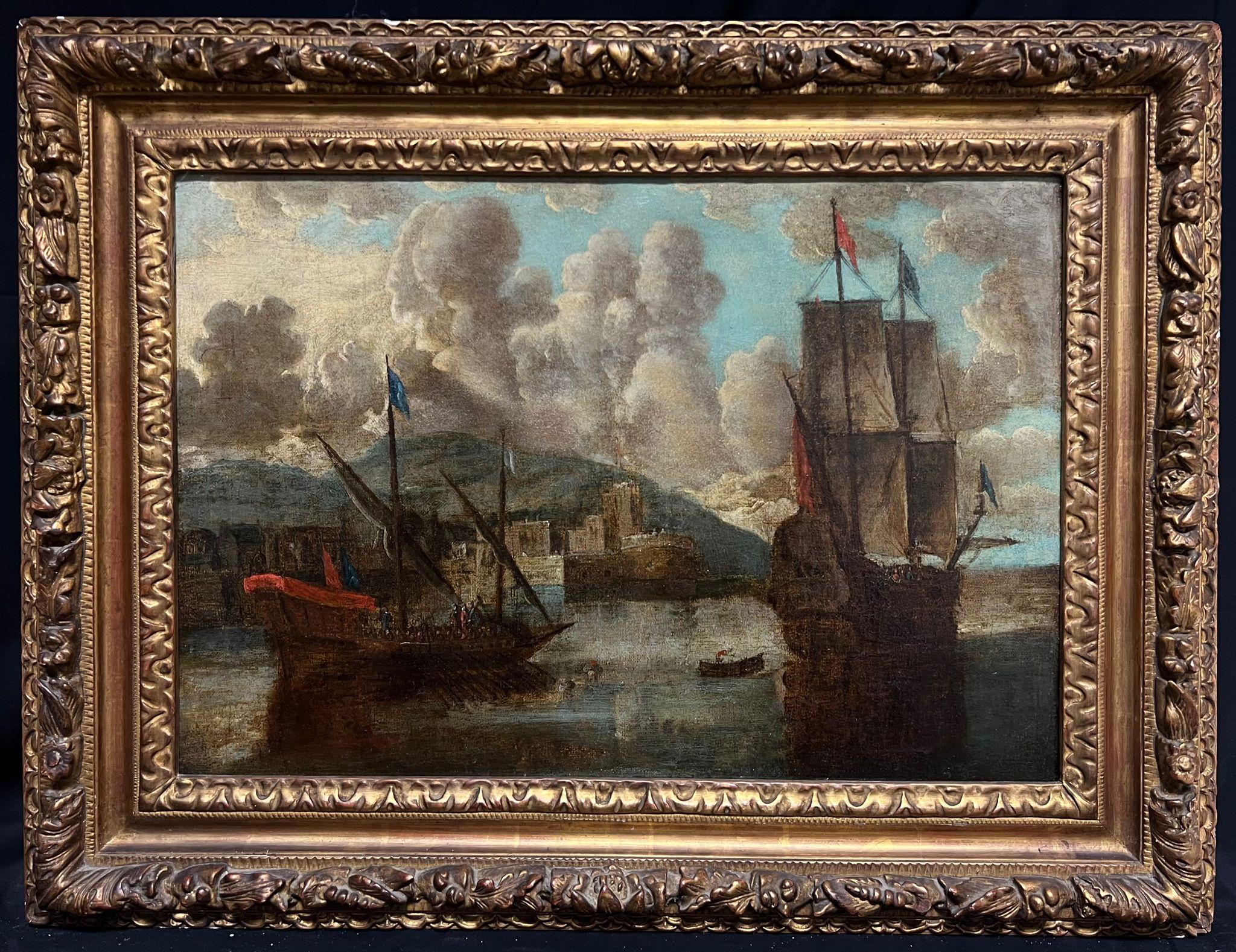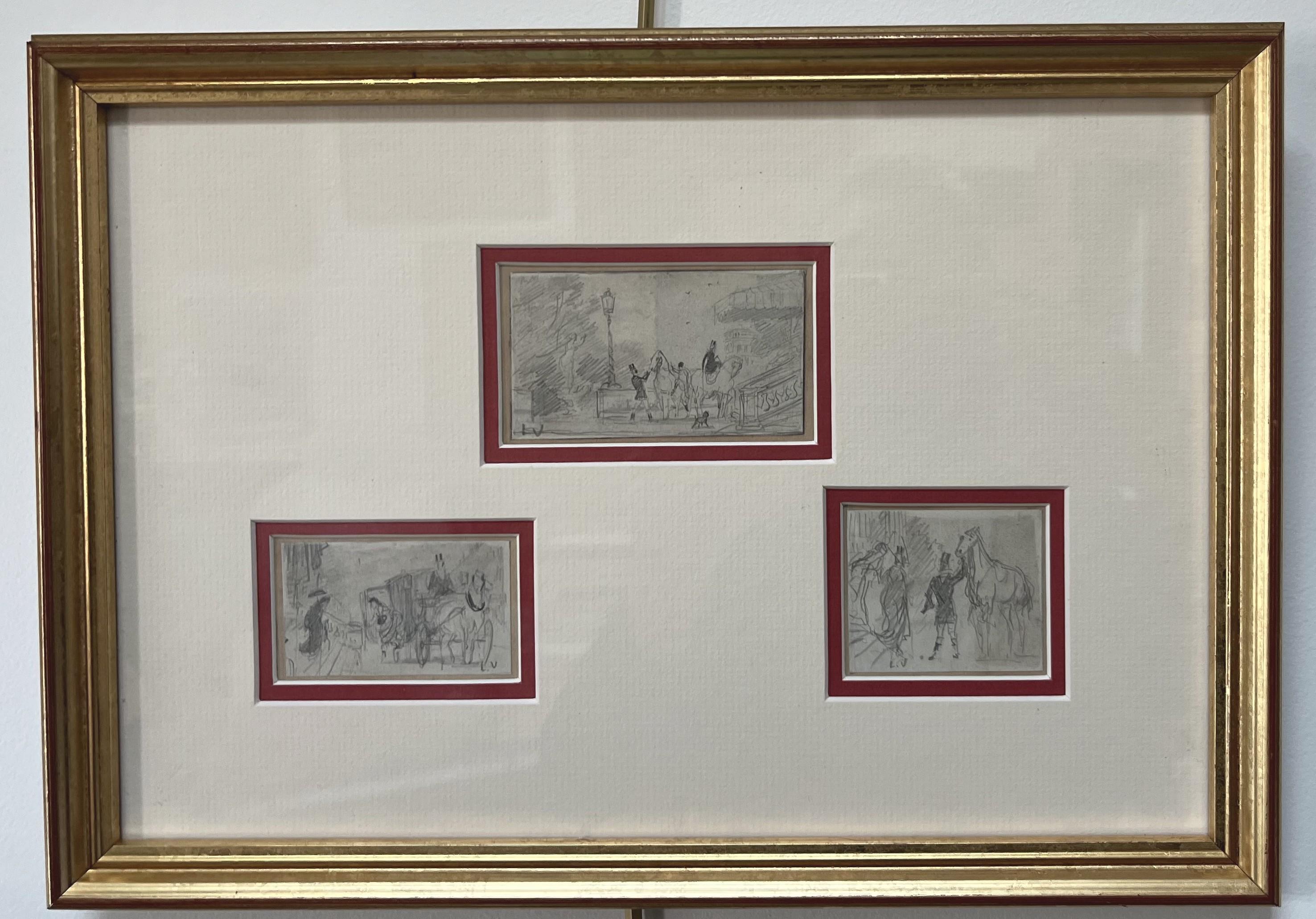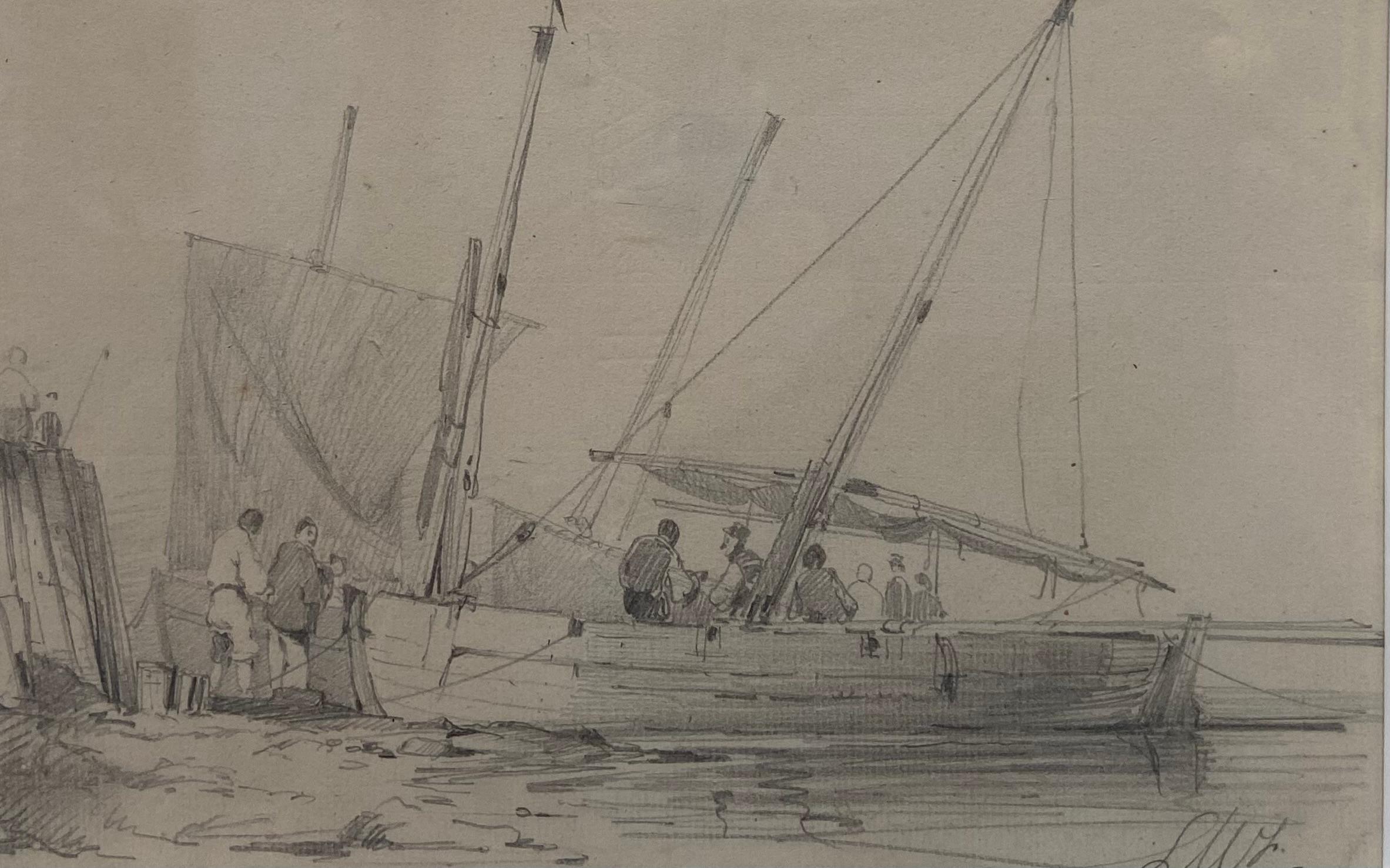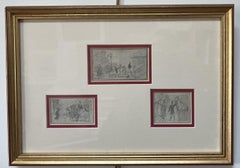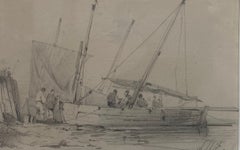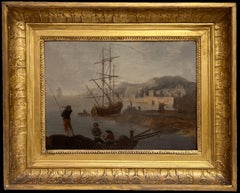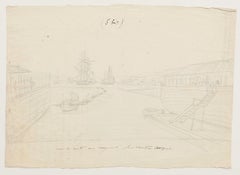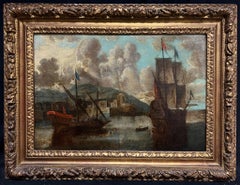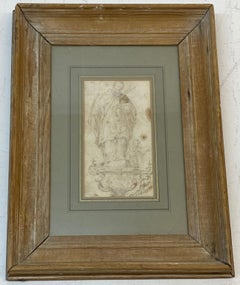Items Similar to French School Of The 18th century, An Ancient Shipyard, Drawing
Video Loading
Want more images or videos?
Request additional images or videos from the seller
1 of 10
UnknownFrench School Of The 18th century, An Ancient Shipyard, Drawingcirca 1780
circa 1780
$426.83
$569.1125% Off
£317.83
£423.7725% Off
€360
€48025% Off
CA$586.49
CA$781.9825% Off
A$656.39
A$875.1925% Off
CHF 342.59
CHF 456.7825% Off
MX$8,004.57
MX$10,672.7725% Off
NOK 4,384.62
NOK 5,846.1625% Off
SEK 4,150.61
SEK 5,534.1425% Off
DKK 2,740.36
DKK 3,653.8225% Off
Shipping
Retrieving quote...The 1stDibs Promise:
Authenticity Guarantee,
Money-Back Guarantee,
24-Hour Cancellation
About the Item
French school of the 18th century
An ancient shipyard or building site (?)
Ink and ink wash on paper
17.5 x 23 cm
In a modern frame 32 x 37 cm
- Creation Year:circa 1780
- Dimensions:Height: 6.89 in (17.5 cm)Width: 9.06 in (23 cm)
- Medium:
- Movement & Style:
- Period:1780-1789
- Condition:
- Gallery Location:Paris, FR
- Reference Number:Seller: inv 1981stDibs: LU111224287541
About the Seller
5.0
Gold Seller
Premium sellers maintaining a 4.3+ rating and 24-hour response times
Established in 2018
1stDibs seller since 2019
248 sales on 1stDibs
- ShippingRetrieving quote...Shipping from: Paris, France
- Return Policy
Authenticity Guarantee
In the unlikely event there’s an issue with an item’s authenticity, contact us within 1 year for a full refund. DetailsMoney-Back Guarantee
If your item is not as described, is damaged in transit, or does not arrive, contact us within 7 days for a full refund. Details24-Hour Cancellation
You have a 24-hour grace period in which to reconsider your purchase, with no questions asked.Vetted Professional Sellers
Our world-class sellers must adhere to strict standards for service and quality, maintaining the integrity of our listings.Price-Match Guarantee
If you find that a seller listed the same item for a lower price elsewhere, we’ll match it.Trusted Global Delivery
Our best-in-class carrier network provides specialized shipping options worldwide, including custom delivery.More From This Seller
View AllFrench school 18th Century, A mytholological scene with a couple, drawing
Located in Paris, FR
French school 18th Century,
A mytholological scene with a couple,
Pen and brown ink, brown ink wash on paper
11.5 x 11.5 cm, diameter of the main scene : 10,5 cm
in a modern frame under glass : 33.5 x 33.5 cm
This drawing by a particularly talented 18th-century artist - as yet unidentified - is notable for its mastery of pen and wash...
Category
1760s Old Masters Figurative Drawings and Watercolors
Materials
Ink
$872 Sale Price
20% Off
French School 19th Century, Scenes from parisian life, three drawings signed
Located in Paris, FR
French School of the 19th Century
Scenes of the parisian life, three drawings
each one signed with the initials LV
Pencil on paper
Sizes of the drawings :
4.8 x 8 cm
4 x 6.5 cm
4....
Category
1870s Impressionist Figurative Drawings and Watercolors
Materials
Carbon Pencil
French school of the nineteenth century, LW (?) Harbor scene, drawing signed
Located in Paris, FR
French school of the nineteenth century, LW (?)
Harbor scene, animation around a skiff
Pencil on paper Signed LW (?) Bottom right
15 x 21 cm
Framed : 27 x 34.5 cm
This very fine ...
Category
1840s Romantic Landscape Drawings and Watercolors
Materials
Carbon Pencil
$469 Sale Price
20% Off
19th Century French School, Studies of horses and small scenes, original drawing
Located in Paris, FR
19th Century French School,
Studies of horses and small scenes,
pencil on paper
14.5 x 21 cm
Framed : 25.5 x 32.7 cm
This study sheet, which brings together studies of horses and...
Category
1850s Romantic Animal Drawings and Watercolors
Materials
Pencil
French School 19th century, Set of nine humoristic drawings, pencil on paper
Located in Paris, FR
France, 19th century
Set of nine humoristic drawings, various subjects in the same mount
Black pencil, for some of them with highlights of white gouache
various dimensions : 6 x 5.5 ...
Category
1850s Romantic Figurative Drawings and Watercolors
Materials
Carbon Pencil
$377 Sale Price
25% Off
France 18th Century, The Surprised Lovers, original drawing
Located in Paris, FR
France circa 1770
Two lovers surprised in bed
Black chalk on paper
13 x 17 cm
Modern frame : 34 x 38 cm
This drawing had been attributed to Gabriel de Saint Aubin (1724-1780). It's...
Category
1760s Old Masters Interior Drawings and Watercolors
Materials
Chalk
$929 Sale Price
20% Off
You May Also Like
18th Century French Old Master Oil Painting Ancient Port Harbor Shipping Marine
Located in Cirencester, Gloucestershire
Harbor Scene
Circle of Claude Joseph Vernet (French, 1714-1789)
oil painting on canvas, framed in antique gilt frame
framed: 20.5 x 25.5
canvas: 19 x 23.5 inches
condition: very good...
Category
18th Century Old Masters Landscape Paintings
Materials
Oil, Canvas
Port - Pencil on Paper - 18th Century
Located in Roma, IT
Port is an original drawing in pencil on paper realized by an Anonymous artist of the XVIII century.
The State of preservation is good, except for some diffused foxing.
Sheet dime...
Category
18th Century Modern Figurative Drawings and Watercolors
Materials
Pencil
18th-Century Old Master Painting Harbor Scene with Tall Ships & Fortifications
Located in Cirencester, Gloucestershire
The Fortified Harbour
French School, circa 1700's
oil on canvas, framed in antique carved gilt wood frame
Framed: 21.5 x 28.5 inches
Canvas : 15 x 22 inches
Provenance: private colle...
Category
Early 18th Century Old Masters Landscape Paintings
Materials
Oil
17th Century Old Master Drawing
Located in San Francisco, CA
17th Century Old Master Drawing
Old master drawing with figure and putti
Housed in a handsome contemporary wooden frame
Drawing dimensions 4...
Category
17th Century Old Masters Figurative Drawings and Watercolors
Materials
Graphite
Drawing Attributed to Jean-Baptiste Pillement
By Jean-Baptiste Pillement
Located in Kittery Point, ME
Two-faced drawing.
Studies of characters and harbor scene.
With an inscription stating it is from the sketchbook in the collection of Dr. Manuel de Espirito Santo in Lisbon.
Ink a...
Category
Antique Late 18th Century French Neoclassical Drawings
Materials
Paper
$2,200 Sale Price
20% Off
18th Century French Port Scene Oil Painting from Provence
Located in Dallas, TX
Sharing similarities of a mid-17th-century Italian capriccio painting, this French oil painting from Provence depicts fantastical architecture set amongst the more realistic setting ...
Category
Antique 18th Century French Paintings
Materials
Canvas, Wood, Giltwood, Paint
More Ways To Browse
Old Master Drawings Framed
French School 18th Century
Large Figurative Paintings
Original Line Art
Whimsical Art
Green Abstract Art Paint
19th Century Signed Paintings
Black Background Paintings
Etching Plate
Paintings With Hearts
Tree Of Life Art
Painting 1995
Reproduction Art
Italian Love Art
Window Frame
Signed Picasso
E Paintings
French Culture



